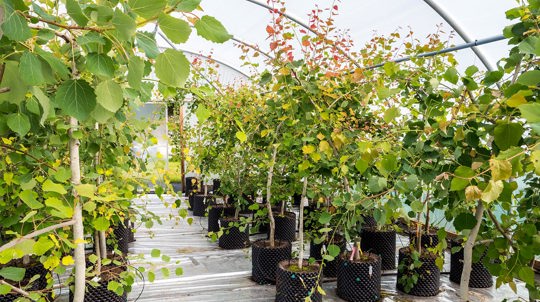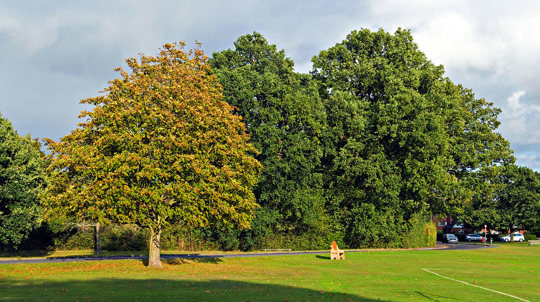The benefits of domestic tree production are evident and demand continues to grow. Now is the time to unlock this industry’s potential to meet key government tree targets.
Trees are essential to sustaining biodiversity, mitigating climate change, and enhancing public wellbeing. In 2023/24, Britain planted over 20,000 hectares of new woodland, the highest in 35 years, yet market certainty remains a key challenge for tree nurseries. We need a thriving tree production sector to meet future planting targets.
That's why the Strong Roots project aimed to:
- explore the key barriers to domestic tree production
- identify solutions to increase availability of homegrown trees
- produce evidence-based recommendations for improved governmental support for the sector.
The report applies to Great Britain and involved a desk-based review of the existing evidence, two online surveys, and stakeholder interviews. It was a collaboration between the Woodland Trust, Horticultural Trades Association, National Trust and Royal Horticultural Society.
Benefits of British-grown trees
The tree nursery, planting and management sector is a vital contributor to the economy.
£2.6bn
contributed by the sector to the economy
through tree planting and management (1)
22,000 jobs
supported
Growth could increase this by 9,900 (1)
4.1bn tonnes
of carbon dioxide
already locked up in UK forests (2)
Key findings
Strong Roots explored the challenges and opportunities for domestic tree production. The report found:
- strong market confidence and demand for British trees is vital for growth
- seed supply can be limited due to natural fluctuations and poor market confidence
- Britain lacks a rootstock production sector
- tree production grants have aided production of forestry saplings but need to be expanded
- labour and skills gaps prevent the sector expanding
- research and innovation are essential to increase production efficiencies
- community tree nurseries face financial and regulatory barriers.
Tree nursery survey results
86%
found seed supply a limiting factor
93%
found demand forecasting a challenge for their business
78%
had invested in automation but saw barriers to expanding
86%
of fruit, nut and ornamental nurseries reported a skills gap
83%
would use a certified British-grown logo
100%
would prefer domestically produced stock
Recommendations
These recommendations will help to strengthen tree production and create the conditions for a thriving and resilient sector.
Key strategic recommendations for essential and fundamental change
1. Establish a GB Tree Procurement Unit.
2. Conduct a feasibility study on what percentage of imported material could be grown in Britain.
3. Develop an action plan for productive and ornamental trees.
4. Establish a tree production research group with research institutions.
5. Create and promote a logo for British-grown trees.
Changes for growth in the short and medium term
6. Increase alignment between tree supply, demand, and planting grants.
7. Support landowners to contract grow trees when using government planting grants.
8. Publish regular and clear data on imports of woody stemmed species, such as trees, shrubs, topiary, and hedging.
9. Commit to the establishment and management of seed sources.
10. Sensitively revisit seed collection procedures on protected sites, including SSSI, to open the genetic resources of these sites.
11. Revise the current outdated seed provenance zones.
12. Support competition and diversification of seed supply.
13. Aid uptake of automation.
14. Ensure courses and apprenticeship opportunities meet current and future skills needs.
15. Embed tree production across the national curriculum as part of horticultural education.
16. Increase tree production skills using publicly owned facilities.
17. Launch a project on how impacts of climate change may affect tree production.
18. Provide accessible government funding for CTNs and small nurseries.
19. Commit to sustained funding to support CTN networks.
Working with our tree nursery sector for a diverse supply of homegrown trees is not just a matter of preference; it is essential to thriving landscapes and enabling environmental and nature commitments.
Read the full report
Download nowExplore more
(1) Oxford Economics. (2024). The economic impact of environmental horticulture and landscaping in the UK. 16. The Economic Impact of Environmental Horticulture and Landscaping in the UK | Oxford Economics [Accessed 22 January 2025]
(2) Forest Research. (2024). Forestry Statistics 2024. Forestry Statistics 2024 - Forest Research [Accessed 22 January 2025]




